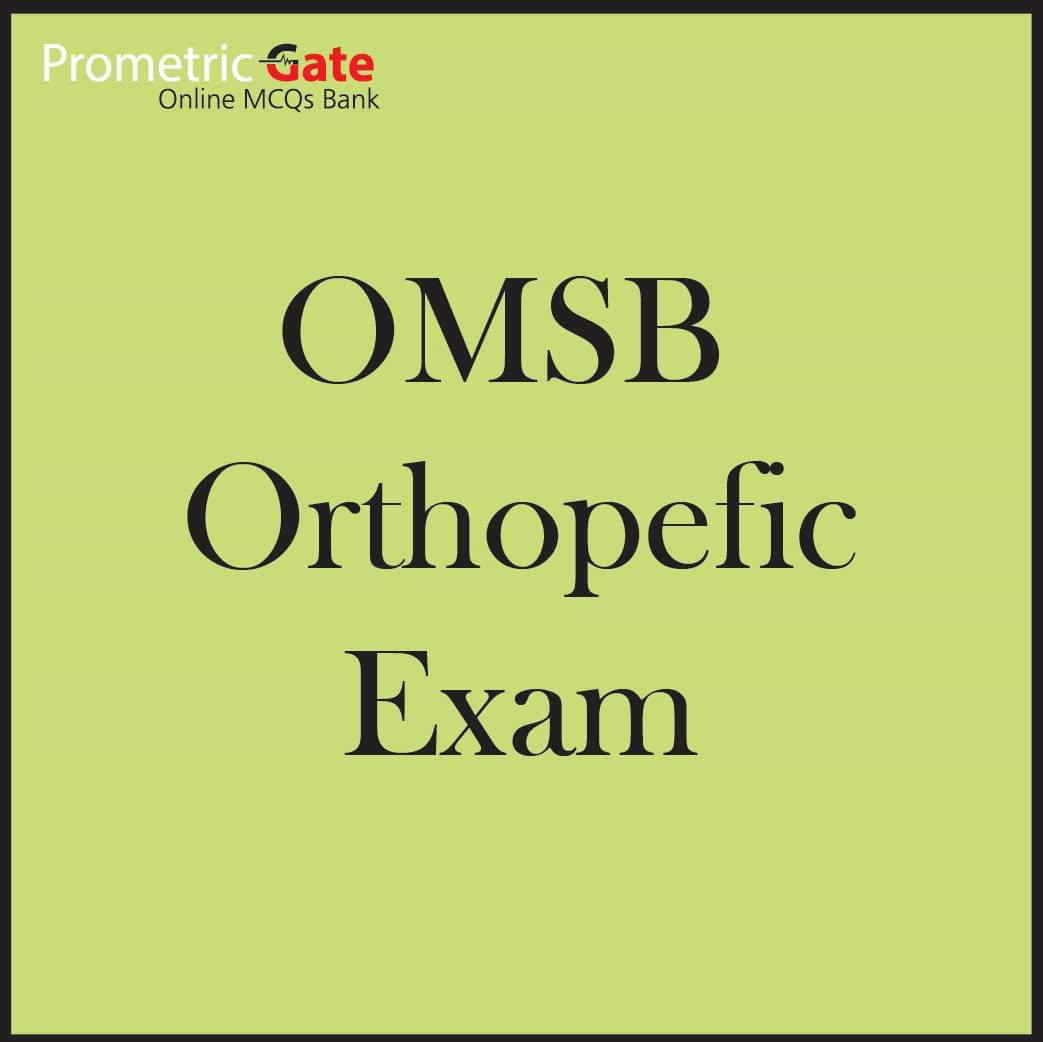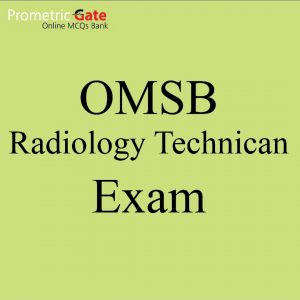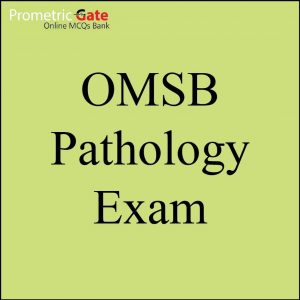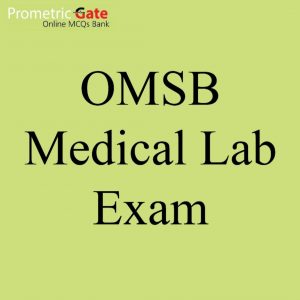Oman Orthopedic Exam Materials 2024
(4000 MCQs with explanations)
Authentic study materials more than 5000 new MCQs (with explanation for each question) for those preparing for OMSB Exam – Oman (Oman Medical Specialty Board) for Orthopedic specialty.
Questions Samples :
Question 1
A 55-year-old woman has rheumatoid arthritis with shoulder, elbow, and hand/wrist symptoms. No single site of involvement is more symptomatic than the others. After failure of nonoperative treatment, the appropriate order of surgical intervention is:
1) Hand/wrist, elbow, shoulder
2) Elbow, shoulder, hand/wrist
3) Shoulder, elbow, hand/wrist
4) Shoulder, hand/wrist, elbow
5) Hand/wrist, shoulder, elbow
Generally speaking, the more symptomatic joints are addressed first in rheumatoid arthritis. However, when upper extremity joints are equally disabling, the hand and wrist disability is addressed first. Although it is somewhat controversial, it is generally agreed that the shoulder should be addressed before the elbow. This eliminates referred pain from the shoulder to the elbow, allowing for better evaluation of elbow symptoms. Addressing the shoulder pathology earlier may prevent ensuing rotator cuff tears that can compromise results of arthroplasty. Lastly, increasing shoulder mobility may decrease the stresses on an arthritic elbow.
Correct Answer: Hand/wrist, shoulder, elbow
Question 2
When performing total shoulder arthroplasty, a subscapularis tenotomy is performed as part of the surgical exposure. The following anatomic landmark provides the greatest information regarding the point of initiation of the subscapularis tenotomy:
1) Pectoralis major tendon
2) Deltoid insertion on the humerus
3) Pectoralis minor tendon
4) Anterolateral aspect of the acromion
5) Biceps tendon
It is important to identify the superior aspect of the subscapularis tendon prior to performing subscapularis tenotomy in the surgical exposure for shoulder arthroplasty. With an intact rotator cuff, identification of the superior aspect of the subscapularis tendon at the rotator interval can be difficult. If the biceps tendon is located just medial to the humeral insertion of the pectoralis major and followed superior, the rotator interval can be located and opened, allowing visualization of the superior aspect of the subscapularis tendon. In the event that the biceps tendon is ruptured or dislocated, the base of the coracoid process can be used to identify the medial aspect of the rotator interval.
Correct Answer: Biceps tendon
Question 3
A patient who underwent a posterior stabilized total knee arthroplasty 10 months ago has new complaints of knee pain and popping. This pain was exacerbated with climbing stairs and rising from a chair. An audible and palpable clunk is heard with terminal extension. Range of motion is from 0° to 110º, and there is no evidence of instability with examination. A pop is felt with active extension in the terminal 15° to 30º of motion. The best treatment is:
1) Revision arthroplasty
2) Revision to a condylar constrained type prosthesis
3) Nonsteroidal anti-inflammatory medicines
4) Patellectomy
5) Arthroscopic debridement or open revision of the patellar component
Patellar “clunk” syndrome is a type of peripatellar fibrous hyperplasia characterized by a discrete suprapatellar fibrous nodule.
This nodule lodges into the femoral component intercondylar notch dung flexion and displaces with an audible, often painful, clunk with extension. This condition is isolated to posterior stabilized femoral components, and not evident in posterior cruciate ligament retaining prostheses. Initial treatment is physical therapy, which is sometimes successful. Most commonly, either an arthroscopic debridement or open revision of the patellar component and fibrous hyperplasia is needed for resolution of symptoms.
Correct Answer: Arthroscopic debridement or open revision of the patellar component
Question 4
A patient has a displaced supracondylar femur fracture 6 cm proximal to a well-fixed, posterior stabilized component. This knee was asymptomatic prior to fracture. Treatment should include which of the following:
1) Cast bracing
2) Revision to a long stemmed femoral component
3) Traction
4) Plate fixation (Dynamic C ondylar Screw or fixed angle blade) with retention of femoral component
5) Retrograde nail fixation with retention of femoral component
In fractures above a well-fixed femoral component, all attempts should be made to retain the component. The fracture must be aligned correctly and stabilized to permit early range of motion of the extremity. C asting or traction will likely result in loss of motion, while early range of motion without internal fixation can lead to malunion. Posterior stabilized femoral components with closed housing prohibit retrograde intramedullary nailing.
Correct Answer: Plate fixation (Dynamic C ondylar Screw or fixed angle blade) with retention of femoral component
Question 5
A 65-year-old patient presents with complaints of giving way in her knee. She underwent a total knee arthroplasty 2 years ago.
Intraoperatively, the medial collateral ligament was disrupted, but repaired primarily. This has gone on to give the patient instability when she ambulates. Physical therapy and bracing have not helped. On radiographic examination, the components are well fixed and in appropriate position. Physical examination reveals a range of motion from 0° to 130° with no anteroposterior laxity. There is laxity at 0°, 45°, and 90º to valgus stress. Appropriate treatment should now consist of:
1) Ipsilateral semitendinosis and gracillis autograft reconstruction of the medial collateral ligament
2) Allograft Achilles tendon reconstruction of the medial collateral ligament
3) C ontralateral semitendinosis and gracillis autograft reconstruction of the medial collateral ligament
4) Revision to a constrained-condylar type prosthesis
5) Contralateral bone-patellar-tendon autograft reconstruction of the medial collateral ligament
This patient has an incompetent medial collateral ligament throughout range of motion. If the disruption is caught early enough in surgery, primary repair can be made with satisfactory results. Ligamentous reconstruction without conversion to a constrained prosthesis with varus/valgus stability has been shown to be ineffective.
Correct Answer: Revision to a constrained-condylar type prosthesis
Question 6
A 70-year-old patient with a past history of prostate cancer treated with pelvic irradiation wishes to have a total hip arthroplasty for severe unilateral hip osteoarthritis. What is the most likely consequence of cementless fixation of the acetabular cup:
1) Fracture
3) Thromboembolic phenomenon
2) Bleeding
5) Aseptic loosening of the acetabular cup
4) Abductor weakness
Forty-four percent of patients in one study showed failure of fixation to bone of the acetabular cup after previous pelvic irradiation.
This study demonstrates the high failure of porous ingrowth in the presence of previous irradiation in the acetabulum. It is therefore recommended to cement the acetabular cup or to use a protrusio-type cage with cement in this subset of patients. This is secondary to the loss of vascularity and viability of the bone caused by irradiation.
Correct Answer: Aseptic loosening of the acetabular cup
———————————————————————————————————————————————————————————————————————————————————–





Ali moosa –
Woow
Happy to find real MCQs for orthopedic speciality